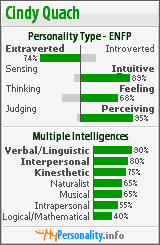In response to Kim McGill's blog re' collaborative writing.
I think collaborative writing adds a new dimension to the writing process that reflects the needs of our contemporary culture. Although there will always be a place for private and personal writing, the ubiquitous nature of blogs, facebook, twitter indicates that more and more so, writing is moving into the public sphere. Most writing that is published electronically is, by nature, works in progress. We post, we receive feedback (solicited or not) and we often rewrite or reconceptualize. In this way, teaching collaborative writing explicitely is crucial. I have had some success using Googledocs, wikis and track changes in Word.
1. Googledocs - I agree that giving collaborative writing a purpose is essential. Without a authentic purpose, there is simply no motivation to write. The writing itself is not as effective as a product in and of itself.
Working with Google Docs, students wrote a wikipedia articles collaborativey (I used revision history to track their contributions). Students were very excited that they would be contributing to Wikipedia (a previous attempt to draft in wikipedia was a disaster...yikes!). As such, their writing was focussed and directed. What I found quite surprising was the ownership students took of the process...the natural editors in each group took on the nitpicking duties, those with particular strengths in layout took ownership of this domain. The process which evolved was rather fluid in that students also made decisions independently or in groups, to contribute their particular strengths to the piece. Once they had finetuned the piece to the satisfaction of all, groups met face to face to make some final tweaks before uploading to the blowing winds (kind or malevolent) of wikipedia.
2. Wikis - Once again, the purpose of collaborative writing was established. Students groups used wikis on our virtual classroom to create a presentations to be delivered to the entire class. In this instance, we divided up literary terminology into groupings based on commonality; each group would become the experts of one area of terminology (character, irony, rhetorical devices...) and teach to the rest of the class, using their wiki document as a lesson plan, visual aid, note-skeleton. I used history to track contributions.
An added bonus lay in the permanent study notes that students would have access to for study purposes. The class also worked collaboratively to design the test by supplying questions from their area of expertise to a test-design wiki. Boy, did they think they were getting away with murder! But alas, the learning was in writing and knowing exactly what would be on the test!
3. Track Changes in Word: I tend to only used this with senior students because younger ones do not seem to be able to take the suggestions and comments of others and transfer it into meaniningful improvements. After several classes of writing their personal narratives alone, I asked English 12 students to turn track changes on, then walk to a new computer. They were asked to insert comments/suggestions for style, voice, fluency as well as make deletions or additions to the writing. When writers returned to their work, the mark ups were shown distinctly in red. Student writers had the option to either accept/ignore the editing comments made. This process honours collaboration but also gives ultimate veto power to the writer. I think this particular strategy is only effective with more mature students who have already discovered a distinct, albeit evolving, voice.
For me, the value of collaborative writing does not lie in the product but in the process; students are challenged to think critically, negotiate tactfully and engage meaningfully in a real life skill. The learning is layered and seamless.
Friday, May 1, 2009
Subscribe to:
Post Comments (Atom)

Thanks for the ideas, Cindy. I'm going to share them with our English teachers. You are writing from the perspective of someone who has actually tried these methods with students; I write from the vantage point of a coordinator who has been out of the classroom for nearly two years. I love the track changes idea for grade 12 students. I can see this being adopted by many teachers, even those who are afraid of technology.
ReplyDelete- Kim
Cindy,
ReplyDeleteThis is great! I like your focus on giving purpose to the collaboration... essentially it is nothing more than providing clear 'learning intentions', but I've seen many examples of assignments that have not done that, (including my own).
You said it well, "Most writing that is published electronically is, by nature, works in progress."...A work in progress that can be collaborated on, linked to, added to, and elaborated on. What I really like about the differences in your three examples is that the roles of the contributors vary, and inadvertently you are teaching your students to understand that they can meaningfully contribute with and to others in different ways. A necessary skill in a new world of literacy and technology.
Thanks Dave, when I first starting incorporating technology into my teaching repetoire, I must admit that it was the driving force of the lesson. In this way, I was trying to teach tech...which is not my area of expertise. However, when I finally figured out that I was not a tech teacher but rather someone who was using technology as a means to teach the skills and processes that have always been important to me...everything seemed so much more focussed and doable.
ReplyDeleteCindy, I like how you've differentiated the three techniques. I agree with Dave that showing different ways is important. There is no one size fits all rather we need to consider the notion of fit for purpose. Also, it's refreshing to see people move past the technology onto the purpose and process. Technology is not an end to itself just a set of choices for improving the journey and diversifying the learning.
ReplyDeleteGood on you,
Brian
Thanks Brian! "moving past the technology" has been monumental in my practice.
ReplyDelete